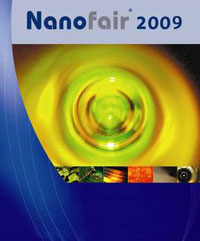| Posted: May 9, 2009 |
Nobel prize winner at nanotechnology fair in Germany |
|
(Nanowerk News) Professor Dr. Peter Grünberg of the Forschungsinstitut Jülich will be a speaker at this year's 7th International Nanotechnology Symposium on May 26-27, 2009 in Dresden, Germany. Due to his discovery of the giant magnetic resistance effect in the 1980's he was awarded in 2007 with the Nobel Prize for physics.
|
 |
|
Under the slogan "New Ideas for Industry" experts from research and industry will discuss challenges and solutions in the areas of:
|
|
Electronics
|
|
Aspects of nanotechnology are already widespread in microelectronics. Ultrathin barrier layers and gate oxides as well as high-k dielectrics are under investigation or already in use. In the next few years EUV lithography will become the method of choice for the generation of feature sizes of 32 nm and below. Supramolecular self-assembly makes it possible to integrate molecular structures into lithographic architectures on the nanometer scale and may open the way to even tinier structures.
|
|
Materials/Surfaces
|
|
Nanostructured materials and surfaces are of high technological relevance because they allow for the design of novel materials and coatings. Protective carbon coatings in hard disk drives, which are only a few nanometer thick, or optical coatings on glass panes are prominent examples. Nanoparticles are already used in modern sunblockers as well as in cosmetics. Control on the nanometer scale permits tailor-made tunable physical, chemical and optical properties. Easy-to-clean or even self-cleaning surfaces are other representative topics of current research and development.
|
|
Life Sciences
|
|
Nanotechnological aspects are in widespread use in life sciences. Drug delivery systems or long-term dosable pharmaceutical carriers are of great interest to the pharmaceutical industry. The use of DNA chips has increased rapidly during recent years and is going to be of the utmost importance for modern medicine and diagnosis. Biocompatible surfaces and the use of biological concepts and mechanisms in materials engineering are other hot topics in current research.
|
|
|
|
Energy
|
|
Renewable energy sources as well as energy effi ciency have become topics of utmost importance. Great efforts are made in order to establish photovoltaics as a competitive natural energy source. Structuring the surface of solar cells on a nanometer scale can enhance the effi ciency. Other concepts like Grätzel cells also are based on the nanostructure of the materials. Fuel cells as well as thermoelectric power generation are further examples where nanotechnology aspects play a dominant role and which might become important in the future.
|
|
Optics
|
|
Nanometer-scaled layers and structures are becoming more and more important in optics and photonics. Very thin layers are routinely used as anti-reflecting coatings for displays, lenses and other optical elements. High-grade anti-refl ective coatings can be created using nanoporous polymer films. Ultrathin layers are being increasingly utilised in solar cells and are a key element in the realisation of large and brilliant displays based on OLEDs.
|

